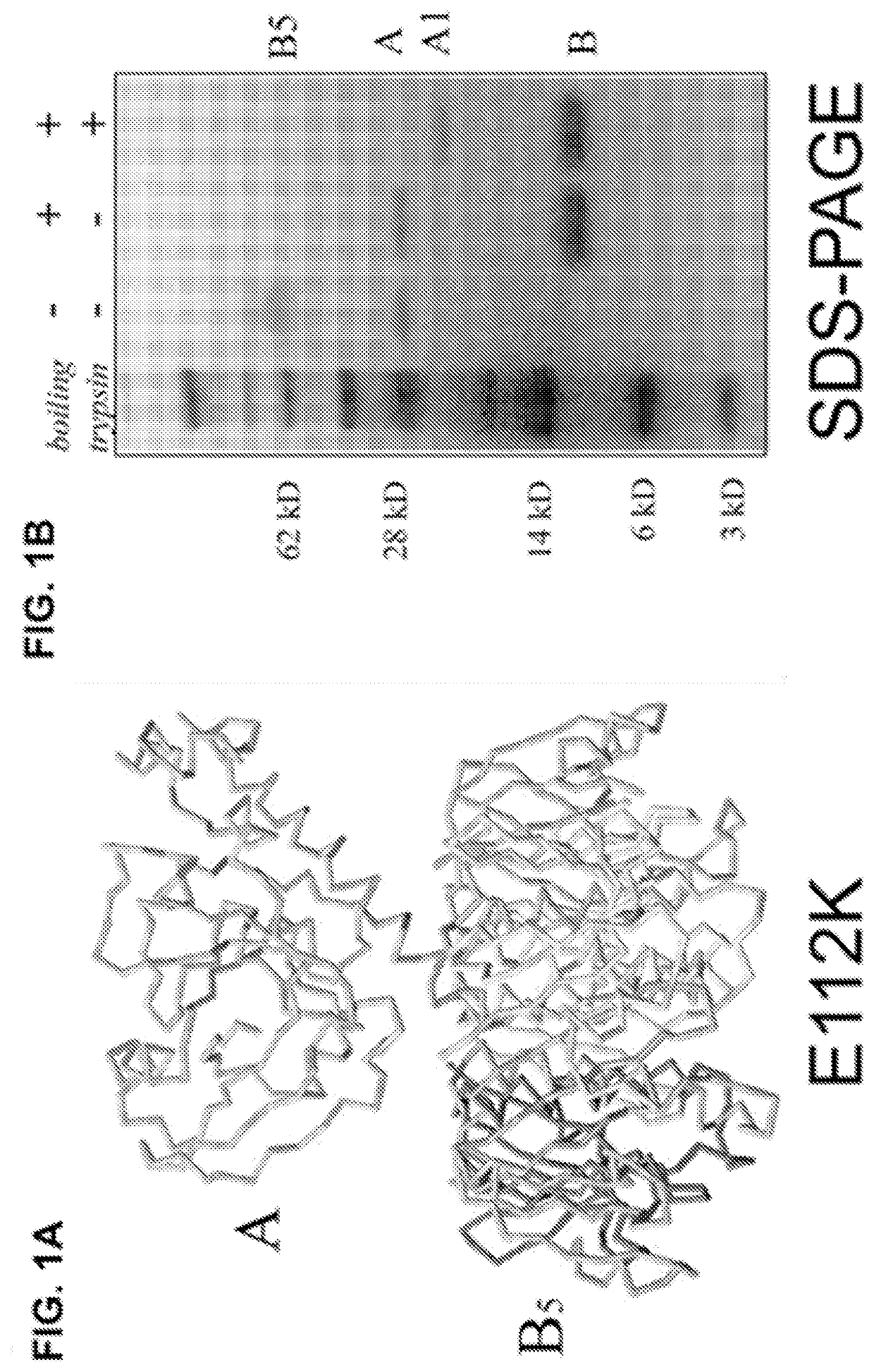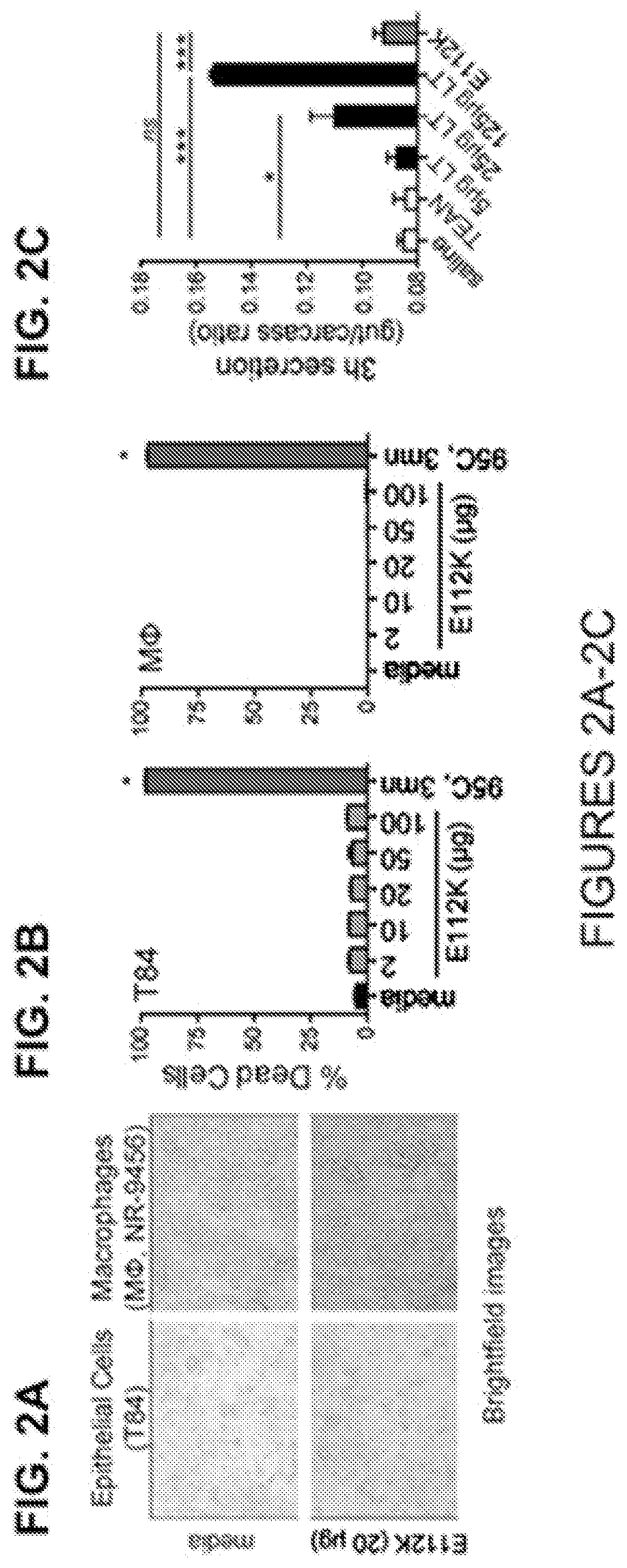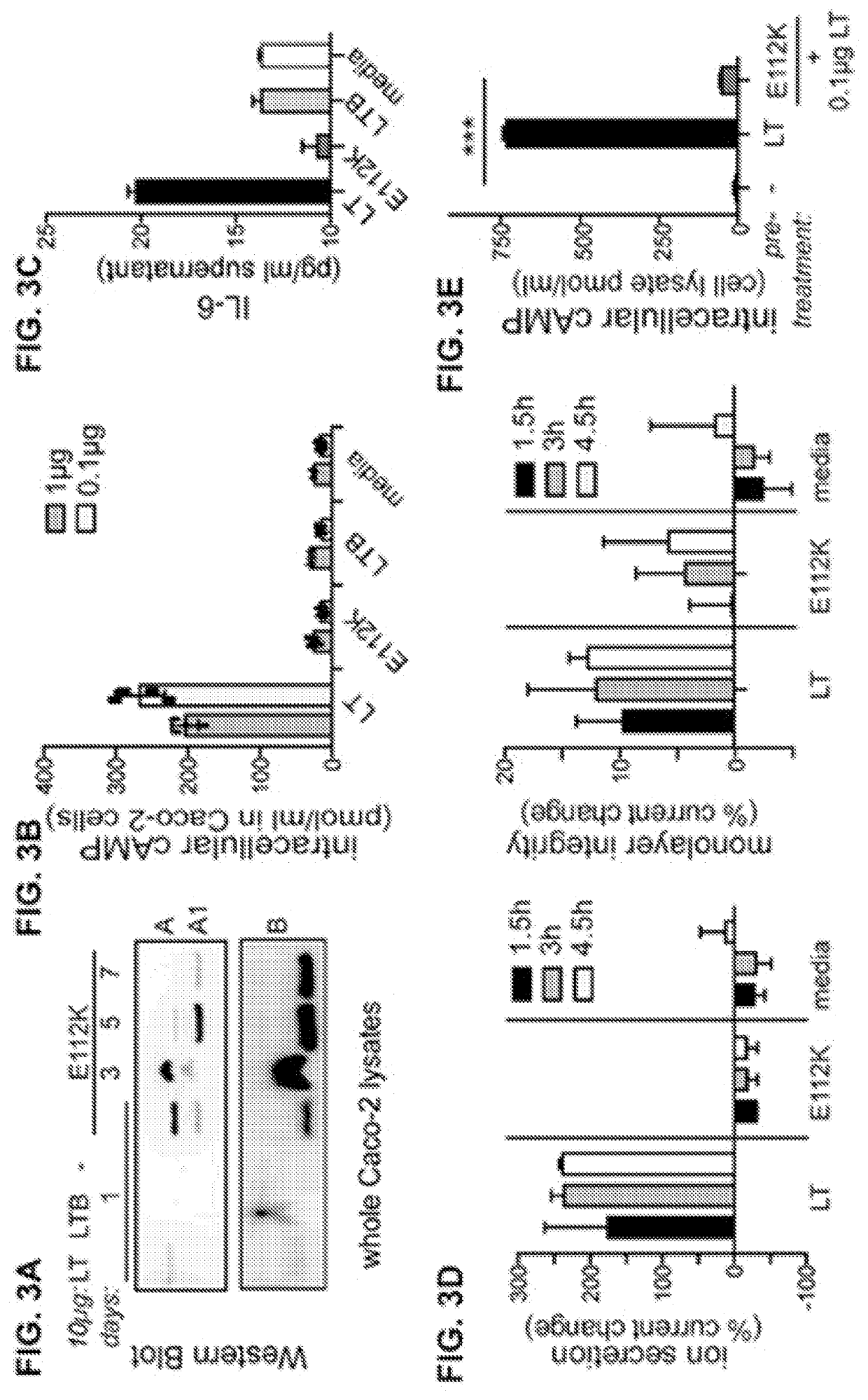Mutated e. coli enterotoxins as Anti-inflammatory agents
- Summary
- Abstract
- Description
- Claims
- Application Information
AI Technical Summary
Benefits of technology
Problems solved by technology
Method used
Image
Examples
example 1
[0081]This Example sets forth some methods and materials used in the studies discussed below.
Production of the E112K Mutant
[0082]E112K was prepared by galactose-affinity chromatography as described previously (Clements and. Finkelstein, Infect Immun. 1979, 24(3):760-9, Cheng et al., Vaccine, 2000, 18:38-49). Briefly, toxins were purified from E. coli expression cultures grown overnight in a 10-liter fermenter. Cells were harvested by centrifugation and lysed in a microfluidizer model M-110L (Miocrofluidics, Newton, Mass.). The cell lysates were dialyzed overnight in TEAN (0.05 M Tris, 0.001 M EDTA, 0.003 M NaN3, 0.2 M NaCl, pH 7.5), clarified by centrifugation, and subjected to chromatography on separate immobilized D-galactose columns (Pierce, Rockford, Ill.). Toxins were eluted with 0.3 M galactose in TEAN and passed through an endotoxin removal column (Pierce, Rockford, Ill.). The composition and purity of each protein was confirmed by SDS-PAGE (FIG. 1 and FIG. 9) and Limulus Ame...
example 2
[0083]This Example shows that E112K prevents basal cytokine secretion and intracellular cAMP accumulation in intestinal cells.
[0084]As shown in FIGS. 2A-C, the E112K mutant is non-toxic, maintaining cell viability without inducing intestinal secretion. Confluent 6-well plates of epithelial cells or macrophages that were cultured with media alone or combined with E112K doses for 24 hours in 2 mls total volume. FIG. 2A presents Brightfield images of these culture wells. FIG. 2B shows viability staining results post-imaging by trypsinizing cells, washing, and staining for cytometric analyses in comparison with cells killed by heating to 95° C. for 3 mn. Data is shown as % dead cells. In a further study, BALB / c mice were administered E112K or LT by oral gavage. After 3 hours, the mice were euthanized and the gut / carcass weight ratios established. The results are shown in the graph presented as FIG. 2C. (Significance by one-way ANOVA analysis with Tukey's multiple comparison post-hoc tes...
example 3
[0086]This Example shows that E112K inhibits intracellular cAMP, ADP-ribosylation, and activation of dendritic cells.
[0087]One of the consequences of LT intoxication of cells is ADP-ribosylation of host cell proteins and accumulation of cAMP. in dendritic cells, this leads to activation and upregulation of costimulatory surface markers, such as CD80 and CD86. Dendritic cells are key initiators of adaptive immune responses, linking the traditional innate and adaptive arms of the immune system. E112K is rapidly internalized and its A- and B-subunits detected in treated dendritic cells (FIG. 4A). Unlike LT, E112K will prevent cAMP accumulation in stimulated dendritic cells (FIG. 4B). Furthermore, pretreatment of dendritic cells with E112K inhibits intracellular ADP-ribosylation of host cell proteins by LT and LT-mediated activation (FIGS. 4B, 4C). Pre-treatment of dendritic cells with E112K, prior to LPS-stimulation also results in decreased dendritic cell activation. These changes are...
PUM
| Property | Measurement | Unit |
|---|---|---|
| Mass | aaaaa | aaaaa |
| Mass | aaaaa | aaaaa |
| Current | aaaaa | aaaaa |
Abstract
Description
Claims
Application Information
 Login to View More
Login to View More - R&D
- Intellectual Property
- Life Sciences
- Materials
- Tech Scout
- Unparalleled Data Quality
- Higher Quality Content
- 60% Fewer Hallucinations
Browse by: Latest US Patents, China's latest patents, Technical Efficacy Thesaurus, Application Domain, Technology Topic, Popular Technical Reports.
© 2025 PatSnap. All rights reserved.Legal|Privacy policy|Modern Slavery Act Transparency Statement|Sitemap|About US| Contact US: help@patsnap.com



